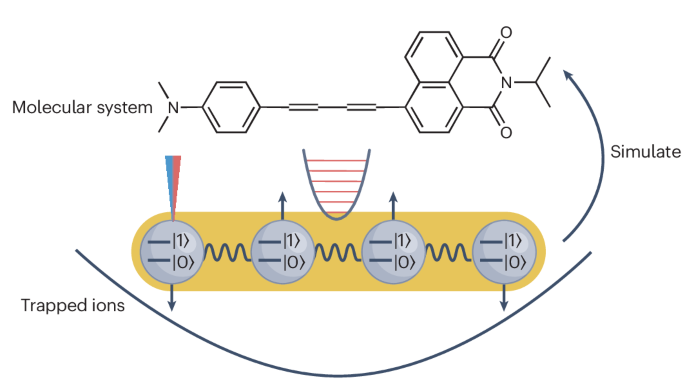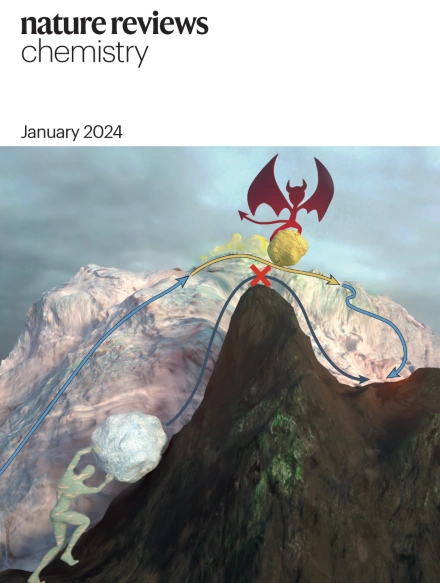利用捕获离子量子模拟凝聚相化学动力学,寻求量子优势
IF 38.1
1区 化学
Q1 CHEMISTRY, MULTIDISCIPLINARY
引用次数: 0
摘要
模拟凝聚相中分子的量子动力学是化学领域的一项长期挑战。潴留离子量子系统可以作为模拟量子化学动力学的平台,这是目前经典数字模拟所无法企及的。为了确定这些模拟的 "量子优势",需要对噪声硬件上的模量模拟和经典数字算法进行性能分析。在这篇综述中,我们比较了有噪声的模拟困离子模拟器和几种可供选择的经典数字方法,以模拟具有线性振子耦合的分子哈密顿模型的动力学。我们介绍了几种常用于分子系统建模的简单哈密顿,它们可以用现有的或新出现的困离子硬件进行模拟。这些哈密顿可以作为使用阱离子模拟器模拟经典数字方法无法模拟的系统的垫脚石。最后,我们确定了经典数字模拟与模拟量子模拟相比性能最弱的动力学状态。在这些情况下,我们可以充分利用量子的潜在优势。本文章由计算机程序翻译,如有差异,请以英文原文为准。


Seeking a quantum advantage with trapped-ion quantum simulations of condensed-phase chemical dynamics
Simulating the quantum dynamics of molecules in the condensed phase represents a longstanding challenge in chemistry. Trapped-ion quantum systems may serve as a platform for the analog-quantum simulation of chemical dynamics that is beyond the reach of current classical-digital simulation. To identify a ‘quantum advantage’ for these simulations, performance analysis of both analog-quantum simulation on noisy hardware and classical-digital algorithms is needed. In this Review, we make a comparison between a noisy analog trapped-ion simulator and a few choice classical-digital methods on simulating the dynamics of a model molecular Hamiltonian with linear vibronic coupling. We describe several simple Hamiltonians that are commonly used to model molecular systems, which can be simulated with existing or emerging trapped-ion hardware. These Hamiltonians may serve as stepping stones towards the use of trapped-ion simulators for systems beyond the reach of classical-digital methods. Finally, we identify dynamical regimes in which classical-digital simulations seem to have the weakest performance with respect to analog-quantum simulations. These regimes may provide the lowest hanging fruit to make the most of potential quantum advantages. Analog-quantum simulations derived from tracking the evolution of trapped-ion systems hold the potential to simulate molecular quantum dynamics that are beyond the reach of classical-digital strategies. This Review explores the prospects for developing this quantum advantage.
求助全文
通过发布文献求助,成功后即可免费获取论文全文。
去求助
来源期刊

Nature reviews. Chemistry
Chemical Engineering-General Chemical Engineering
CiteScore
52.80
自引率
0.80%
发文量
88
期刊介绍:
Nature Reviews Chemistry is an online-only journal that publishes Reviews, Perspectives, and Comments on various disciplines within chemistry. The Reviews aim to offer balanced and objective analyses of selected topics, providing clear descriptions of relevant scientific literature. The content is designed to be accessible to recent graduates in any chemistry-related discipline while also offering insights for principal investigators and industry-based research scientists. Additionally, Reviews should provide the authors' perspectives on future directions and opinions regarding the major challenges faced by researchers in the field.
 求助内容:
求助内容: 应助结果提醒方式:
应助结果提醒方式:


